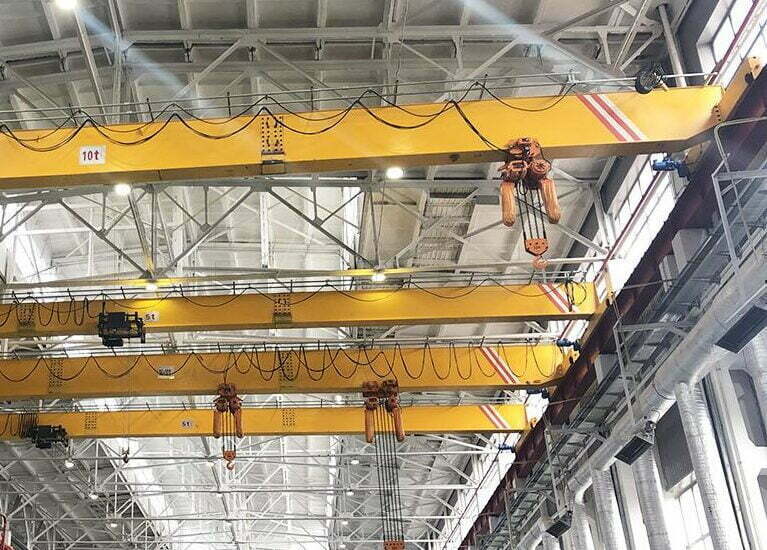


Overhead crane downtime results in a significant loss of productivity. As per recently conducted research, every year, production, process, and construction companies lose around 25 to 30% of their annual revenues on this plea. Therefore, it is important that you pay appropriate attention to this point. If you can minimize overhead crane downtime, you can achieve significant optimization of your productivity and revenues. The question is how to accomplish this plan. Here are some simple tricks and tips that will enable you to achieve the desired standard in this regard.
Prevention is always a better approach than cure. With that said, you should focus on reducing the overhead crane downtime rather than spending resources and time on repairing and replacing the damaged units. As per our technical team’s guidelines, you should develop a regular and in-depth crane inspection schedule. The objective of the inspection should be to identify the probable troubles that are likely to come up. Consequently, those units should get appropriate preventive measures, including repair and replacement, as and when needed. Regular inspection will help you spot the forthcoming challenge early, before it takes a devastating toll on the overhead crane. It is the only effective way to keep the crane in perfect working condition. Small repairs and replacements will help you to escape the threats of incurring major troubleshooting activities at a later cost that inevitably results in massive expenses. On the other hand, timely repair and replacement help you minimize workplace injuries, thus securing your workforce. You must comply with the international guidelines for crane inspection. You can even think about engaging professional inspection agencies that are specialized in handling similar assignments. Their engagement brings more expertise and skill to produce the most delightful outcome.
As your business process keeps growing, you require handling an enhanced workload. Until yesterday, the mechanism that was fine for handling the erstwhile scope of work turned outdated the next day, as the volume of work expands. As new technologies keep evolving, the work process becomes more complicated and intricate. Thus, the outdated mechanism is likely to fail to support the new standards. The only way to combat these threats is to keep modernizing and upgrading the infrastructure that can handle the enhanced workload and the more complicated work process. Therefore, keep your eyes open for the latest advancement in technology, and you must adopt the latest changes in the first instance. It will add more dynamism to your work process, eventually earning an edge over your competitors.
Most importantly, you should develop regular preventive maintenance for the overhead cranes if you desire to reduce downtime. The inspection schedule will identify the issues with the parts and parcels of the machine. Accordingly, you need to apply adequate repair and replacements so that things never escalate to the extent that the machine itself goes out of function. Small repairing and replacements at a small time will keep the cranes safe and in perfect working condition to optimize the work process. On the other hand, if you let the issues unattended, a stage will come when the cranes catch damage to the extent that it becomes impossible to resolve such issues. Your work process will suffer a lot in such instances, and you get compelled to incur major repair and replacement expenses. Hence, you need to be regular with the preventive maintenance that has to include appropriate repairs and replacements at the right time. To ensure quality preventive maintenance, you should engage reliable and trustworthy agencies. The vendor should have the right experience, knowledge, and know-how to handle maintenance activities in the most proficient manner. As a trick to finding the most reliable vendor, you may refer to the reviews on their services. You should hire the party that displays the most positive review in its favour.
Mishandling is one of the most potent factors that trigger downtime. It implies, that if the crane operators are not operating the crane in compliance with the standard operating policies, the crane will experience downtime more frequently. Such uninvited activities by the operator cause significant damage to the cranes, which are often irreversible. Consequently, the company feels compelled to absorb the blow of longer downtime, ripping through the desired productivity and efficiency standards. Therefore, you don’t have any alternatives other than to recruit trained and certified operators to operate the overhead cranes. The training will enable the operator to operate in the most prudent manner, eventually reducing the chances of downtime. It is equally important that you arrange for skill upgrade training for crane operators on an ongoing basis.
Remote monitoring technology will enable you to monitor the overhead cranes more closely and on an ongoing basis. It will support you in taking the appropriate steps to prevent the cranes from hitting the downtime phase. At the same time, it will help you to extend better safety and protection to your workforce.